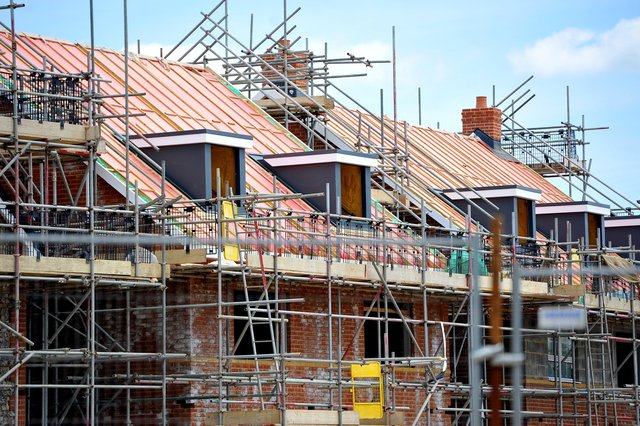Derelict and underused brownfield sites across the country will be transformed into new homes, to level up the country and create thriving communities for people to live and work, the Department for Levelling Up, Housing and Communities has announced.
West Midlands, Greater Manchester and the Tees Valley Combined Authorities have been awarded their share of £30 million funding to regenerate brownfield sites across the 3 regions and create 2,500 new homes.
The announcement is part of the government’s plan to level up communities across the country, creating vibrant new places for people to live and work, boosting local economies and delivering new homes and jobs.
The funding – first announced in the Levelling Up White Paper – will support young people and families into home ownership and protect cherished green spaces by transforming unsightly derelict buildings and car parks.
A further £8 million from the Brownfield Land Release Fund has also been allocated to 13 councils across England to deliver almost 900 homes, boost the self and custom build sector, support small and medium sized building firms and create thousands of jobs.
Housing Minister Rt Hon Stuart Andrew MP said:
“Transforming derelict brownfield sites into vibrant places where people want to live and work is a key part of our mission to level up the country and is something I have supported for my entire career.
The funding announced today will breathe fresh life into former industrial sites, creating thriving urban communities and building more homes so young people and families have the opportunity to get onto the housing ladder.
Our levelling up plans for housing will be guided by this brownfield first approach, this includes the building of more self and custom build homes which will be a boost for small builders and create thousands of jobs.”
In addition, £4.45 million of funding has also been awarded to 16 local areas under the One Public Estate (OPE) programme, which will support councils to work with central government and public sector partners to unlock public sector land for an additional 3,000 new homes over the next 10 years, creating 4,500 jobs.
This announcement builds on £120 million of funding for brownfield land announced in the Levelling Up White Paper earlier this month.
The funding will also be given to 7 Mayoral Combined Authorities to deliver 7,800 homes on brownfield land.
The MCAs receiving funding are: West Midlands, Greater Manchester, West Yorkshire, Liverpool, South Yorkshire, North of Tyne, and Tees Valley.
The government recently launched a £1.5 billion Levelling Up Home Building Fund, providing loans to small and medium sized builders and developers to deliver 42,000 homes with the vast majority going outside London and the South East – helping to rebalance the economy and spread prosperity and opportunity more equally.
Construction Materials Prices Will Continue to Rise in 2022
While prices will soften for some materials compared to the highs seen in 2021, prices will broadly remain elevated, necessitating advanced methods of supply chain management
Linesight’s latest Quarterly Construction Materials Costs report shows that higher prices seen in 2021 are set to continue throughout 2022.
The report reveals that supply chain disruption and continued high costs of production will remain a challenge for the British construction industry this year, resulting in cost increases in materials, including bricks, plasterboard, cement and concrete.
While prices have started to soften for critical materials, including steel rebar, timber, and copper, continued high demand alongside challenges in distribution will prevent a significant easing in prices in 2022.
Copper prices will be particularly challenging. Having increased in 2021 owing to disruptions in global supply and strong demand, there was a short-term easing as supply became sufficient to meet demand.
However, solid underlying copper demand, including demand driven by electric vehicle manufacturing and associated charging infrastructure, will continue to put upward pressure on prices.
Supply-side improvements will result in a steady decline but concerns over low inventories will prevent a marked downturn in prices in 2022 with approximately 5% decrease on 2021 levels for 2022 expected.
Over the course of 2021, British Steel announced some seven price increases, as production costs rose, and demand surged.
A slight dampening in demand will see prices cooling off from recent highs, with a 1% to 5% fall in the price of steel rebar expected during 2022, although an expected increase in energy costs will prevent a marked correction in prices, despite the weaker outlook for iron ore.
The growth in domestic demand for lumber resulted in a surge in the import of timber and panel products in 2021, with disruptions in supply chains putting heavy upward pressure on prices.
Demand is set to remain high in 2022, reflecting more broadly the demand for alternative, sustainable building materials.
Compared to traditional key building materials, such as concrete, which may be more readily available, the impact of rising gas prices on production costs on lumber suggests the market may have to continue looking for alternative materials.
The report shows that while the construction industry grew by 13.1% in real terms in 2021, according to the Office for National Statistics, this remains 3.8% below the 2019 figure, signaling that there is still work to be done for the sector to recover fully to pre-pandemic levels.
Linesight will be producing quarterly reports tracking commodities to provide the industry with essential insights and guidance for managing current market conditions.
Michael Riordan, Managing Director, Linesight UK, said:
“Construction materials prices soared in 2021, and while there were hopes that these price hikes would be relatively short-lived, the advent of the Omicron variant of COVID-19 means the supply chain disruption that pushed up prices last year will be with us for some months to come.
With current market conditions, advanced approaches to procurement and project management are essential.
This includes earlier engagement with the supply chain and closer management of supply chain relationships.”

